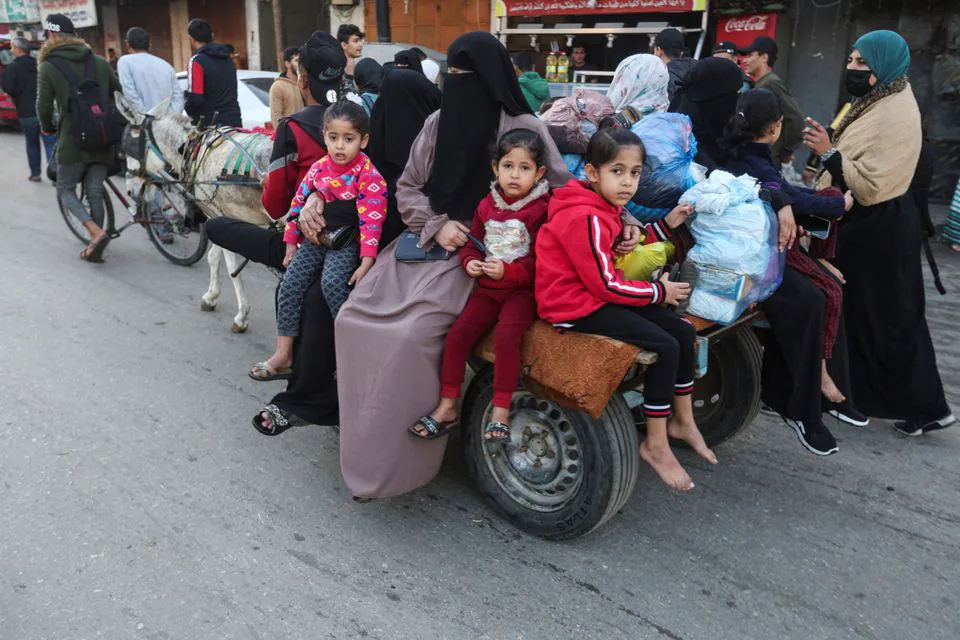A temporary ceasefire has been implemented in the Gaza Strip, providing a much-needed respite from the devastating conflict that has plagued the Palestinian enclave for the past 48 days. Although both Israeli and Hamas forces have accused each other of sporadic violations, there have been no reports of big bombings, artillery strikes, or rocket attacks since the ceasefire began at 7 a.m. (0500 GMT) on Friday.
The ceasefire includes the release of 13 Israeli women and children held hostage by Hamas in exchange for Palestinian prisoners held in Israeli jails. Additionally, aid is set to flow into Gaza, which has been gripped by a humanitarian crisis due to weeks of Israeli bombardment that has resulted in the loss of thousands of Palestinian lives.
Reuters journalists have observed Israeli tanks moving away from the Gaza Strip’s northern end, while aid trucks have been seen rolling in from Egypt at the southern end. The absence of Israeli air force activity and Palestinian rocketfire contrails above northern Gaza has brought a sense of relief to the residents.
In Khan Younis town, located in southern Gaza, streets are filled with people venturing out of their homes and shelters. One resident, Khaled Abu Anzah, expressed hope, optimism, and pride in their resistance. He stated, “We are proud of our achievements, despite the pain this caused.”
Hamas has confirmed that all hostilities from its forces will cease, but spokesperson Abu Ubaida emphasized that this is a temporary truce. In a video message, he called for an escalation of the confrontation with Israel on all resistance fronts, including the Israeli-occupied West Bank.
The Israeli military has also stated that the fighting will resume soon. Israeli Defence Minister Yoav Gallant said, “This will be a short pause, at the conclusion of which the war and fighting will continue with great might and will generate pressure for the return of more hostages.”
Palestinians have been advised by the Israeli military not to attempt to return to their homes in the northern part of Gaza, which is described as a dangerous war zone.
The conflict in Gaza began when Hamas fighters crossed the border fence into southern Israel on October 7, resulting in the deaths of 1,200 people and the seizure of approximately 240 hostages, according to Israeli tallies. Since then, Israel has launched a series of bombings on the Hamas-ruled enclave, resulting in the deaths of around 14,000 Gazans, with approximately 40% of them being children, according to Palestinian health authorities.
As conditions in Gaza grew increasingly desperate, hundreds of thousands of the enclave’s 2.3 million residents fled their homes in search of safety. Shortages of food, drinking water, fuel, and other basic supplies have exacerbated the humanitarian crisis.
This ongoing conflict marks one of the bloodiest episodes in the long-running Israeli-Palestinian conflict. Israel’s stated intention is to eradicate Hamas once and for all.
Reuters has observed the quiet after dawn from southern Israel, across the fence from the war zone in the northern part of the Gaza Strip. Dozens of Israeli military vehicles, including tanks, have been seen moving away from the Gaza Strip.
Gaza residents have reported that the Israelis have dropped leaflets warning people not to travel north and have fired shots over the heads of those attempting to return to Gaza City.
The ceasefire and the influx of aid bring a glimmer of hope to the people of Gaza, who have endured unimaginable suffering during this conflict. While the ceasefire is temporary, it provides an opportunity for both sides to reassess their strategies and hopefully work towards a more lasting peace.
Source: TimesKuwait







